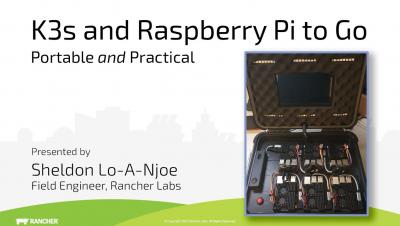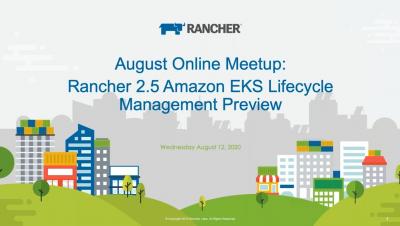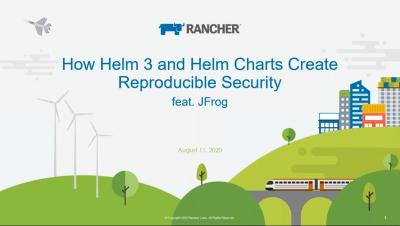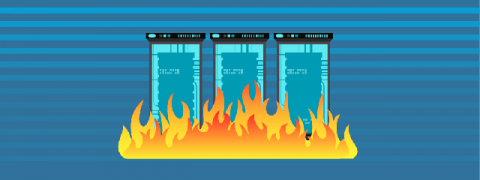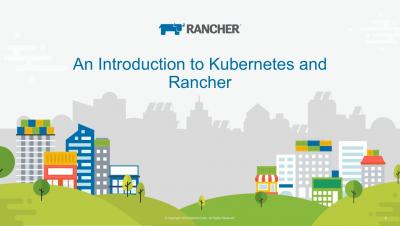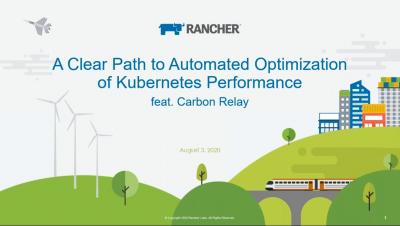Operations | Monitoring | ITSM | DevOps | Cloud
August 2020
Deploying Citrix ADC with Service Mesh on Rancher
As a network of microservices changes and grows, the interactions between them can be difficult to manage and understand. That’s why it’s handy to have a service mesh as a separate infrastructure layer. A service mesh is an approach to solving microservices at scale. It handles routing and terminating traffic, monitoring and tracing, service delivery and routing, load balancing, circuit breaking and mutual authentication.
Upgrade a K3s Kubernetes Cluster with System Upgrade Controller
Kubernetes upgrades are always a tough undertaking when your clusters are running smoothly. Upgrades are necessary as every three months, Kubernetes releases a new version. If you do not upgrade your Kubernetes clusters, within a year, you can fall far behind. Rancher has always focused on solving problems, and they are at it again with a new open source project called System Upgrade Controller. In this tutorial, we will see how to upgrade a K3s Kubernetes cluster using System Upgrade Controller.
Achieving Major Efficiencies through Migration from OpenShift to Rancher
Sometimes technology partnerships are greater than the sum of their parts. That’s the case with two Swiss companies who have come together to deliver Kubernetes solutions to their customers. VSHN is Switzerland’s leading 24/7 cloud operations partner and first Kubernetes Certified Service Provider. amazee.io is an open source container hosting provider that offers flexible solutions built for speed, security and scalability.
Competition or Coopetition in the Persistent Storage Market?
Rancher Labs’ recent launch of Longhorn was in response to DevOps’ distress call for a cloud-native persistent storage solution for Kubernetes. At the time, industry pundit Chris Mellor posted that the company had entered into direct competition with its partners Portworx and Storage OS. A healthy dose of coopetition may be more like it.
The Power of Open Source Software: Rancher Academy Issues 1,000th Certificate
The Rancher Academy launched on May 15, 2020. Here we are, 94 days later, and we’ve issued our 1,000th certificate to a graduate of the Certified Rancher Operator: Level 1 course. Rancher is open source software, so anyone can download it and use it. With that freedom, though, comes a cost: we all learn how to use it according to how we need to use it. Through this lens, the actual potential of Rancher becomes distorted, and the experience of each individual varies widely.
August 2020 Online Meetup - Rancher 2.5 Preview - EKS Lifecycle Management
Creating Memorable Gaming Experiences with Kubernetes
If you’re a gamer, you probably know how immersed you can get in your favorite game. Or if you’re the parent or partner of a gamer, you probably know what it’s like to try to get the attention of someone who is in “gaming mode.” Creating worlds and enriching players’ lives is in Ubisoft’s DNA.
KMC - How Helm 3 and Helm Charts Create Reproducible Security
Disaster Recovery Preparedness for Your Kubernetes Clusters
In the pre-Kubernetes, pre-container world, backup and recovery solutions were generally implemented at the virtual machine (VM) level. That works for traditional applications when an application runs on a single VM. But when applications are containerized and managed with an orchestrator like Kubernetes, this system falls apart. That means effective disaster recovery (DR) plans for Kubernetes must be designed for containerized architectures and natively understand the way Kubernetes functions.
The No. 1 Rule of Disaster Recovery
Let’s imagine you are running a hosting shop with highly visible production applications. Your team has backups, and you have a disaster recovery (DR) policy. You think you are ready to handle any real-world scenario in addition to checking all your compliance boxes. Your third-party backup tools are creating backups, and your implemented solutions have a brochure indicating restore capability.
Intro to Kubernetes and Rancher - 2020-08-06
KMC - Automated Optimization of Kubernetes Performance
Secure Access to PostgreSQL with Pgweb
PostgreSQL is an open source database known for its reliability and performance. It’s used across many industries and applications, and is especially a favorite of web developers. All major web frameworks support PostgreSQL natively, from node.js and Django to Rails and Spring, so its adaptation is relatively broad across the internet for site backend systems. As with any database, developers need tools to work with them. Pgweb is an open source, web-based client for PostgreSQL.
Monitor and Optimize Your Rancher Environment with Datadog
Many organizations use Kubernetes to quickly ship new features and improve the reliability of their services. Rancher enables teams to reduce the operational overhead of managing their cloud-native workloads — but getting continuous visibility into these environments can be challenging. In this post, we’ll explore how you can quickly start monitoring orchestrated workloads with Rancher’s built-in support for Prometheus and Grafana.


